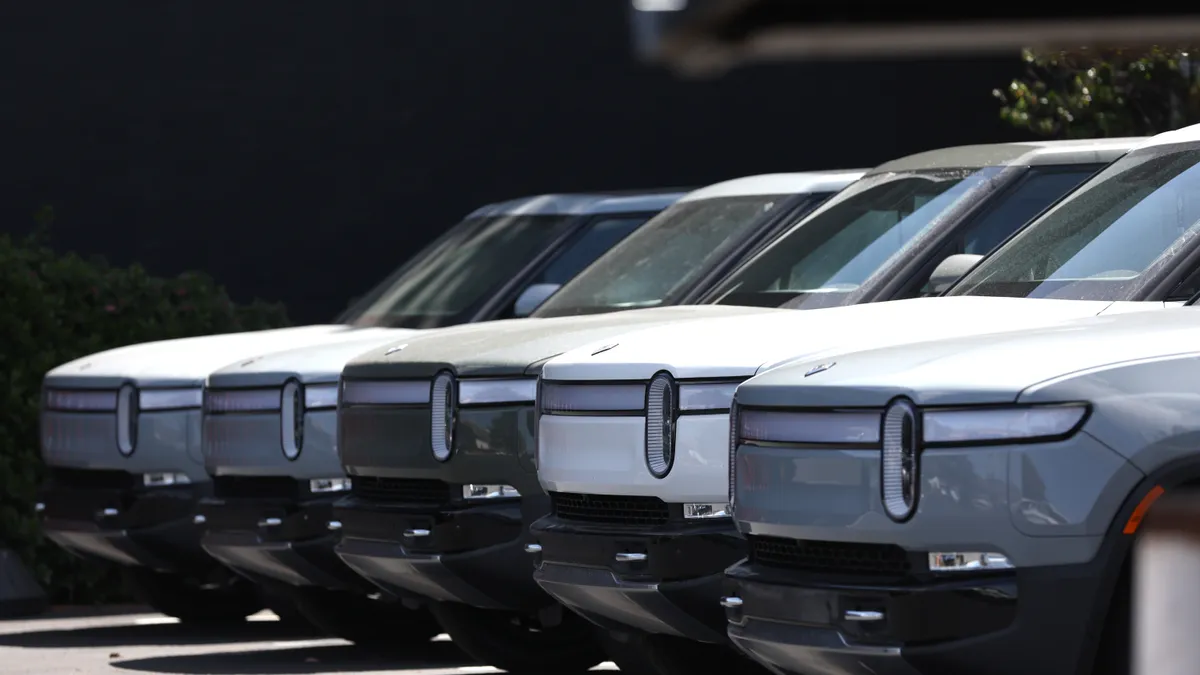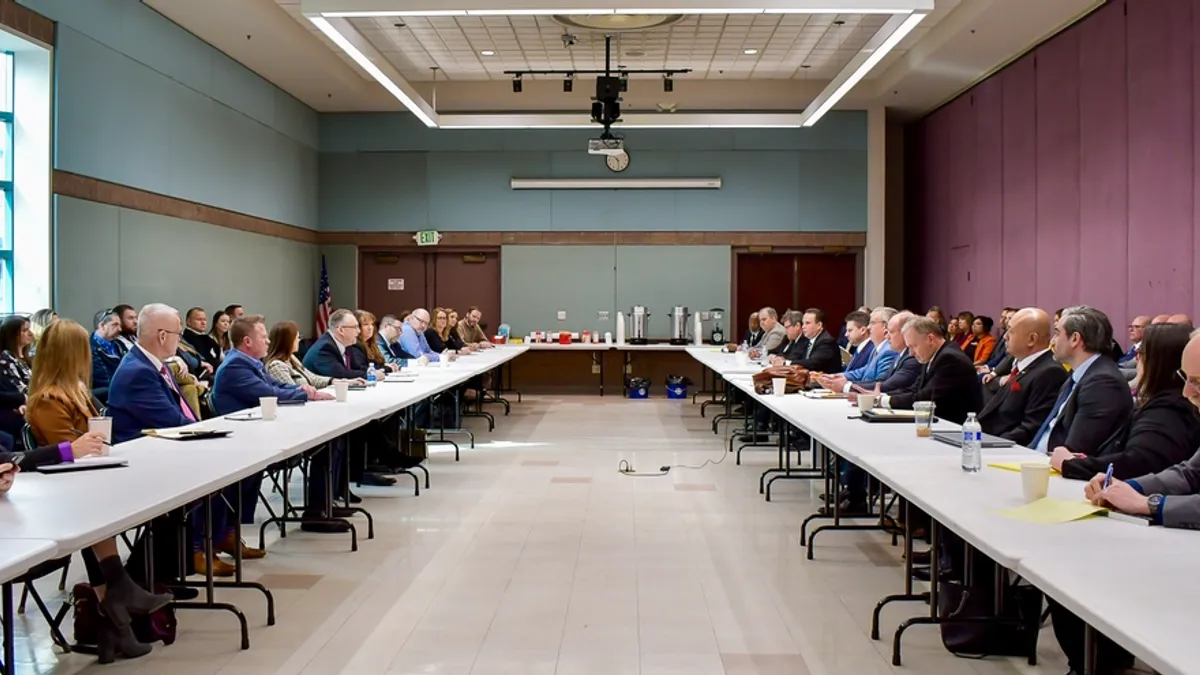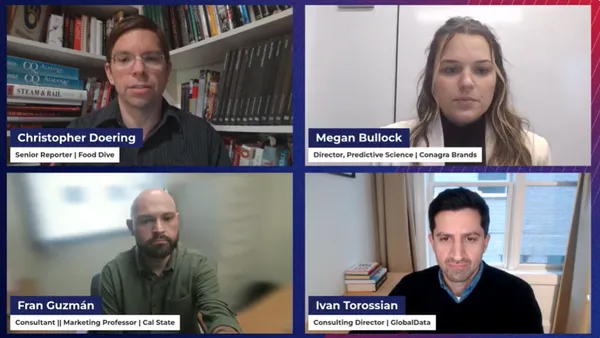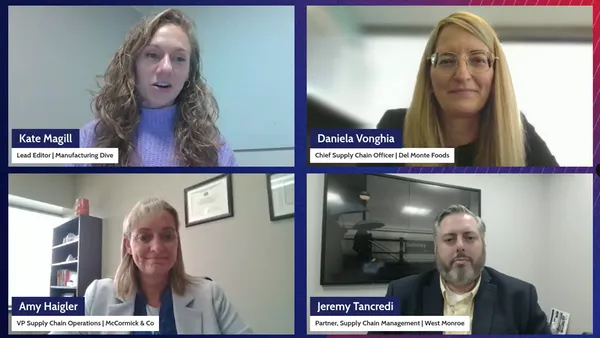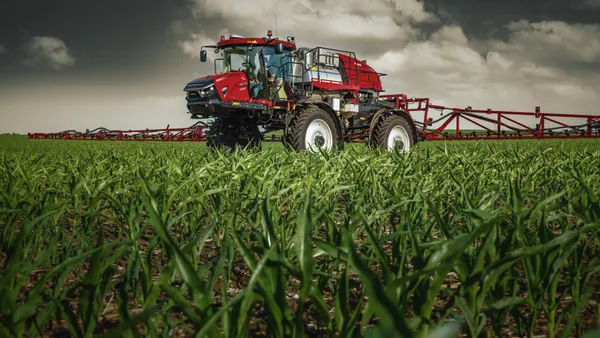Dive Brief:
- Rivian is betting big on ramping up production in the months ahead, with plans to produce 50,000 vehicles in 2023, up more than double from its capacity the year before, executives said on an earnings call Tuesday.
- The company plans to expand the use of a second shift at its Normal, Illinois, facility this quarter, with expectations for the year's production capacity to be "back-end weighted" due to a planned production line shutdown in Q1 and current supply constraints, CFO Claire McDonough said on the call.
- The EV maker is determined to scale assembly of its current R1 models in the months ahead to both dig out of its order backlog and help prepare for its upcoming R2 models.
Dive Insight:
Production snags have trailed Rivian for months as the company attempts to reach large-scale commercialization. It missed the mark on producing 25,000 vehicles in 2022, and last month announced it would lay off 6% of its workforce as it strains to lower its cost structure.
That focus on lowering costs is at the core of Rivian's production plans for the year. The company is pinning many of these hopes on an economy of scale model, in which its plant can produce a greater number of units at a lower per-unit labor overhead cost, McDonough said.
The company can currently produce 65,000 units of its R1 vehicles at its Normal plant, with plans to increase that rate to 85,000 units by mid-next year. Rivian plans to shut down production lines during Q4 of this year to prepare for the capacity change.
Looking ahead to its R2 model, which is currently scheduled to launch in 2026, the company is hoping to consolidate the number of parts used in assembly, including the use of larger single piece stampings, to help increase cost and production efficiency, CEO RJ Scaringe said on the call.
"And that part consolidation not only reduces the number of parts of the vehicle, but as a result, there's less joints, there's less things that need to be attached to one another. It simplifies the assembly process. It simplifies the sourcing process," Scaringe said.
The EV maker continues to struggle with supply constraints, particularly semiconductors. The issue has hampered its ability to ramp production and fully add a second shift, according to Scaringe.
"We wish we could have the components still to fully run the plant across all lines, across multiple shifts, but that's not the case," Scaringe said. "We've worked really hard to set up our supply chain so as we come out of this year and into 2024, we're positioned to really grow.”



